Exploring the Kunstkamera: Russia's Cultural Jewel
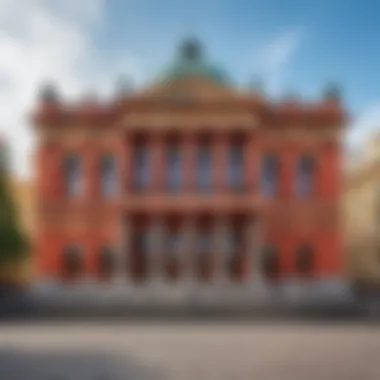
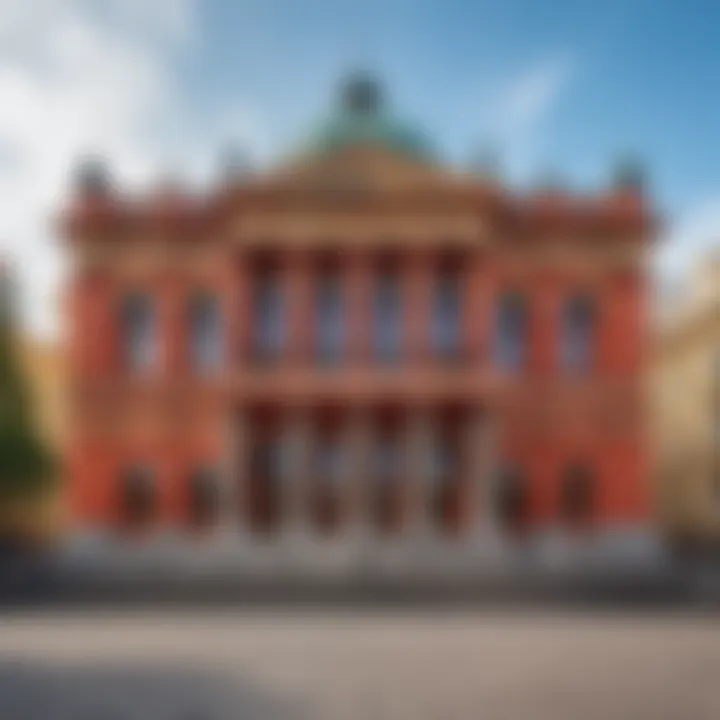
Intro
The Kunstkamera in Saint Petersburg holds a significant place within the tapestry of Russian cultural heritage. Established in the early 18th century, this museum emerged from the vision of Peter the Great, who aimed to foster both scientific knowledge and public education. The legacy of this institution is not just in its vast collection of artifacts but also in its contribution to the understanding of various aspects of human history and natural sciences.
As one of the earliest museums in Russia, Kunstkamera embodies a unique intersection of art, science, and cultural history. Its exhibits illuminate the complex narrative of Russia's evolution over the centuries. This article delves into the origins of the museum, its diverse collection, and its enduring significance in today's society. It serves as a guide for travelers and researchers alike, seeking to explore the depths of Russian cultural heritage.
Popular Destinations
Unique Directions for Exotic Travels
Visiting the Kunstkamera is not just about viewing artifacts; it is about engaging with a narrative that spans continents and eras. The museum exhibits relics from Asia, Africa, and the Americas. Its unique collections include anatomical models, ethnographic artifacts, and more. They tell stories about the diverse cultures of the world and Russia's evolving relationship with them.
Comfortable Places for Family Holidays
For families exploring Saint Petersburg, the Kunstkamera is an excellent choice. It offers a blend of educational and engaging experiences for all ages. The museum often organizes interactive exhibitions and workshops designed for children, allowing them to explore history in a hands-on manner. The setting in the heart of the historic city adds another layer of allure, providing nearby parks and cafes for relaxing moments post-visit.
Preparing for Your Journey
Tips for Choosing Your Route
When planning your trip to the Kunstkamera, consider several factors:
- Best Time to Visit: Opt for weekdays to avoid large crowds. Early mornings often provide a quieter experience.
- Transportation: Utilize the efficient public transport system of Saint Petersburg. The nearest metro station is Admiralteyskaya, which allows easy access to the museum.
How to Pack: Useful Tips
When packing for your visit, keep in mind the following essentials:
- Comfortable Footwear: You will likely spend several hours walking through exhibits.
- Light Jacket: The museum’s climate may vary. A light jacket can keep you comfortable.
- Camera: While some areas may restrict photography, capturing memories inside this historic place can be quite rewarding.
The Historical Background of the Kunstkamera
The Kunstkamera's history is foundational to understanding its significance within Russian culture. Established in the early 18th century, it was intended as a response to the burgeoning desire for knowledge and scientific understanding in Russia. This museum embodies the intersection of art, science, and history, illustrating various eras of Russian life. Exploring its past provides insights into how the Kunstkamera has evolved and its enduring relevance today.
Founding and Early Years
The Kunstkamera was established by Peter the Great in 1714. Initially, it was part of his broader initiative to modernize Russia. He sought to gather knowledge from around the world, reflecting a commitment to enlightenment ideals. The museum originally housed a vast collection of curiosities, many of which were collected during Peter's explorations abroad. This act of collection served not only to educate the Russian elite but also to intrigue the public with the wonders of natural history and human achievement.
In its early years, the Kunstkamera experienced challenges typical of new institutions, including resource constraints and the need for qualified personnel. However, these hurdles did not diminish its ambition. The museum became a focal point for scholars and artists, facilitating discussions that would shape Russian cultural identity. The founding years are marked by efforts to catalog and display an array of objects, establishing a precedent for future generations in both science and art.
Peter the Great's Vision
Peter the Great envisioned the Kunstkamera as more than just a museum; he intended it to be a beacon of enlightenment. He recognized that knowledge was a powerful tool for strengthening the state. By fostering scientific inquiries and cultural exchanges, Peter aimed to elevate Russia on the global stage. This vision was apparent in his directive to collect artifacts that showcased the diversity of human experience.
His approach was revolutionary for the time. He did not confine the collection to only Russian objects but included items from around the world. This inclusivity set the groundwork for the museum's comprehensive collection that embodies global perspectives.
Peter facilitated collaborations with European scientists and artists, allowing Russian professionals to gain valuable insights and skills. This influenced the way society viewed art and science in Russia. The Kunstkamera became a symbol of progress, blending Peter's modernity aspirations with cultural pride. This foundation remains crucial as the museum continues to inspire scientific and artistic endeavors today.
"Knowledge is the path towards greatness." — Peter the Great
Architectural Significance
The architectural significance of the Kunstkamera cannot be overstated. This museum not only serves as a repository of cultural artifacts but also stands as an example of Russia's architectural evolution. Its design and structure reflect the broader historical context of St. Petersburg, as well as the aspirations of its founder, Peter the Great. The emphasis on innovative construction techniques and stylistic choices has made the Kunstkamera a pivotal reference point for both historical and contemporary architectural discourse in Russia.
Design and Construction
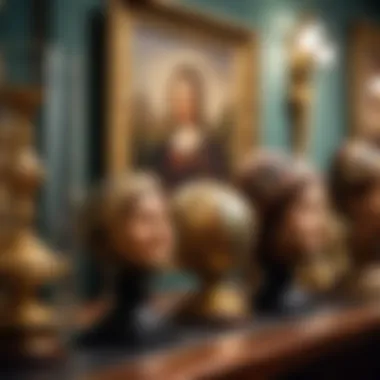
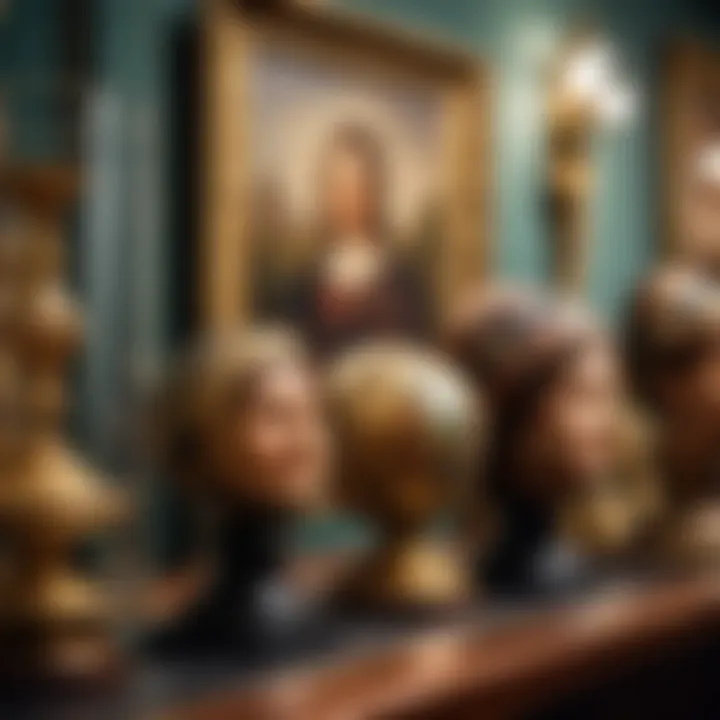
The construction of the Kunstkamera began in 1714, under the guidance of Peter the Great. He envisioned the museum as a "house of curiosities," reflecting his desire to enhance scientific knowledge and education in Russia. The original design was by the architect Domenico Trezzini, who applied a combination of local materials and European architectural influences. The use of brick, stone, and timber reflects a clear attempt to meld practicality with aesthetics, producing a structure that was both functional and impressive.
The layout offers an organized approach, facilitating the display of its diverse collections. Each room is purposefully structured, allowing natural light to enhance the visibility of exhibits. Over the years, there were expansions and renovations that maintained the integrity of Trezzini’s original design while accommodating the growing collection.
Influence of Baroque Style
The Kunstkamera exemplifies the Baroque style so prominent in early 18th-century architecture. Its facade showcases grandiosity through intricate decorations and symmetrical forms typical of this period. The design includes dramatic contrasts between light and shadow which draw attention to architectural details, such as window frames and roof structures.
The influences are evident in the playful yet disciplined layout of the building. Baroque architecture often aims to evoke a sense of movement and fluidity, and the Kunstkamera, with its dynamic forms and engaging spatial composition, achieves this in a distinctive way. The tall spires and visually rich surfaces contribute to a striking silhouette against the Neva River, making it an iconic feature of the city's skyline.
In addition, the interior reflects the ornate characteristics of the Baroque style. This includes elaborate moldings, decorative ceilings, and lavish staircases intended to inspire awe and curiosity.
"Peter the Great wanted to establish a center for education and collections that reflected the glory of Russia. His vision is embodied in the Kunstkamera."
Thus, the architectural merits of the Kunstkamera serve as a reminder of the innovative spirit of early 18th-century Russia. Its design remains a testament to the dynamic cultural and aesthetic movements that shaped St. Petersburg, making it a crucial element of the city’s cultural foundation.
The Collection of Artifacts
The Kunstkamera houses an extraordinary collection of artifacts, serving as a lens through which visitors can explore the richness of Russian cultural and scientific heritage. This collection is not merely a display of items; it reflects the intersection of history, science, and art in a single institution. By providing access to these artifacts, the museum plays a pivotal role in fostering a deeper understanding of Russia's past and its contributions to global knowledge.
Natural History Exhibits
Natural history exhibits at the Kunstkamera offer a glimpse into the biodiversity of the world. These collections include preserved specimens of flora and fauna, allowing for comparisons between species and understanding ecological systems. The attention to detail in these exhibits aids both casual visitors and serious scholars in studying biological diversity. The museum's natural history items are valuable for both educational purposes and scientific research. The sheer variety of specimens invites questions about evolution, adaptation, and the interconnections among living organisms.
This extensive collection provides context on biodiversity and the importance of preserving natural habitats, emphasizing the museum's role in ecological education.
Cultural Artifacts
The cultural artifacts section of the Kunstkamera showcases objects of great significance to Russia's cultural identity. Ranging from ancient tools to modern art pieces, these artifacts embody the stories of people, their beliefs, and their practices over centuries. Each item speaks to the social and economic conditions of its time. Visitors can engage with items that highlight daily life, rituals, and artistic expressions. These exhibits contribute to a comprehensive understanding of how cultural practices have evolved within Russia.
The significance of these artifacts is amplified through guided tours and educational programs, which provide context and historical background. Such initiatives encourage a thoughtful conversation about cultural heritage and identity, enlightening visitors about the diverse influences that shape modern Russia.
Scientific Instruments
The scientific instruments collection is among the most compelling aspects of the Kunstkamera. It includes a range of tools that have played a crucial role in the progression of scientific inquiry in Russia and beyond. Items include early astronomical devices, medical instruments, and measurement tools that reflect the advancements in various fields of study.
These instruments not only illustrate the ingenuity of past scientists but also serve as reminders of the continuous evolution of knowledge. The exhibit invites visitors to contemplate the history of science and its impact on technology and daily life. Furthermore, the museum organizes workshops and discussions centered on these instruments, reinforcing their importance in both historical and contemporary scientific contexts.
In summary, the collection of artifacts at the Kunstkamera acts as a deep reservoir of knowledge and cultural significance. From natural history to cultural expressions and scientific innovations, each section works in tandem to educate and inspire. The narrative woven through these artifacts enriches the understanding of Russia's journey through time.
Education and Research Initiatives
Education and research initiatives at the Kunstkamera play a vital role in its mission to enhance understanding of cultural and scientific heritage. The museum serves as a dynamic platform for educational engagement, targeting various audiences, including students, academics, and the general public. These initiatives aim to bridge the gap between historical artifacts and contemporary learning, thus enriching the cultural landscape of Russia.
One of the primary objectives is to make knowledge accessible. Through educational programs, the Kunstkamera fosters a deeper appreciation for history and science among its visitors. These experiences not only promote awareness of the museum's vast collections but also encourage critical thinking and inquiry.
Programs for Students
The Kunstkamera offers several programs specifically designed for students. These programs include interactive workshops, guided tours, and hands-on activities. Students can explore the museum's vast collections, which encompass natural history, anthropology, and ethnography.
- Interactive Workshops: These sessions engage students by allowing them to interact directly with artifacts, encouraging them to ask questions and express their views.
- Guided Tours: Tailored tours highlight particular themes or collections, enhancing students' understanding of the contextual significance of the items on display.
- Hands-On Activities: These activities might include creating models, conducting experiments relevant to historical scientific practices, or even art projects inspired by artifacts.
By utilizing diverse teaching methods, the Kunstkamera actively engages students, making learning both enjoyable and substantive. This approach is an attempt to inspire future generations to value Russian cultural heritage.
Collaborations with Scientific Communities
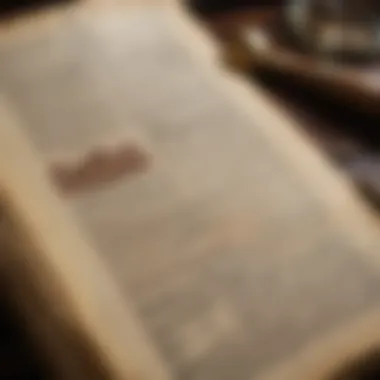
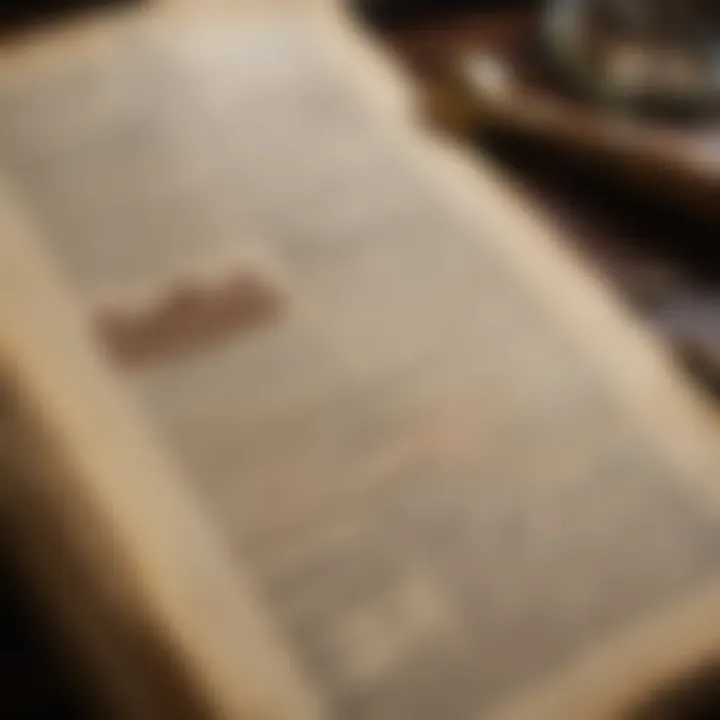
The Kunstkamera also emphasizes collaboration with scientific communities, creating a synergy between museum scholarship and academic research. These partnerships promote the exchange of knowledge and resources, enhancing research initiatives in various fields.
Such collaborations typically include:
- Joint Research Projects: Collaborative studies with universities and research institutions help to digitize collections or explore specific themes in depth, contributing to both academic discourse and public knowledge.
- Conferences and Workshops: Hosting events where experts can present their findings encourages dialogue between researchers, curators, and the public.
- Scholarship Support: Providing fellowships or grants for scholars allows for in-depth research on museum collections, further enriching the broader understanding of Russian culture and science.
Through these activities, the Kunstkamera affirms its role not just as a repository of artifacts but as a proactive entity in cultural and scientific discourse. This engagement fosters a better understanding of the complexities of Russian heritage, making it relevant in a rapidly changing world.
"The Kunstkamera serves as a bridge between the past and the present, emphasizing the continuous relevance of cultural education."
Visitor Experience
The visitor experience at the Kunstkamera is essential for understanding its significance not just as a museum, but as a prominent cultural institution. The way in which visitors engage with the artifacts and exhibitions has lasting educational effects and deepens appreciation for Russian heritage and history.
There are several aspects that contribute to a fulfilling visitor experience. First, knowledgeable guides enhance the journey through the museum. Their insights provide context that mere observation cannot convey. Visitors often leave with a deeper understanding of the exhibits and their historical significance.
Additionally, access to well-structured information is invaluable. Informational signage in the museum is usually clear and thorough, providing details about each artifact's origins and relevance. This approach helps create a self-guided learning experience, allowing guests to explore at their own pace.
Guided Tours and Information
Guided tours at the Kunstkamera serve as a cornerstone of the visitor experience. These tours are led by specialists who can articulate complex ideas in accessible terms. With a variety of themes, visitors can choose tours that align with their interests, be it natural history, anthropology, or art.
Guides often share captivating stories that shape the narrative surrounding the artifacts. For instance, the tales of particular exhibits can provide emotional connections. This connection is often what transforms a simple visit into an enlightening experience.
Moreover, the museum regularly updates its tour offerings. Seasonal exhibitions might feature exclusive guided tours that explore specific topics, encouraging repeat visits from enthusiasts. For those who prefer flexibility, audio guides are available, allowing visitors to curate their experience based on personal pacing and interest.
Exhibitions and Events
Exhibitions and events play a pivotal role in shaping visitor experience at the Kunstkamera. The museum is known for hosting a variety of temporary exhibitions that introduce visitors to new themes and ideas. These exhibitions can span a range of disciplines; they might focus on topics like indigenous cultures, scientific advancements, or artistic expressions through history.
Events are often scheduled to coincide with special exhibitions. These events include lectures, workshops, and panel discussions led by experts. Such programs invite deeper inquiry and discussions around the exhibits, which can foster greater engagement among attendees.
There is also a focus on family-oriented activities that aim to engage younger visitors, ensuring the museum’s offerings cater to all ages. Interactive elements within exhibitions, such as hands-on displays or augmented reality components, can further enrich the experience, making learning enjoyable.
Ultimately, the visitor experience at the Kunstkamera encapsulates cultural immersion and interactive learning, positioning the museum as an important educational resource in Russia.
The Kunstkamera's Role Today
The Kunstkamera museum continues to play a pivotal role in the cultural landscape of Russia in contemporary times. Not just a historical repository, it serves as a vibrant center for education, research, and cultural exchange. Its relevance transcends mere exhibition of artifacts; it symbolizes the confluence of past and present. As society evolves, so does the function of this institution, adapting to contemporary needs while maintaining its core mission of preserving cultural heritage.
Cultural Influence in Modern Russia
The Kunstkamera exerts a profound cultural influence in modern Russia. It acts as a bridge linking traditional Russian heritage with modern ideologies. Visitors can encounter a unique blend of ancient relics alongside contemporary exhibits, which sparks discussions about cultural identity and national pride.
Moreover, the institution fosters understanding of Russia’s multifaceted identity through various programs. Educational outreach allows both locals and tourists to engage with history in dynamic ways. Through workshops, lectures, and immersive exhibitions, it invites personal connections with the past. This encourages visitors to explore the implications of Russia’s extensive history on modern societal issues.
The institution also supports Russian art and artist community. By hosting exhibitions that feature contemporary artists, the Kunstkamera promotes their work to a broader audience. This alliance raises awareness of current artistic expressions rooted in Russian heritage.
Promoting Global Understanding
In today’s globalized world, the Kunstkamera plays a crucial role in promoting global understanding. By hosting international exhibits and collaborative projects, it showcases not only Russian culture but also cultures from around the world. This exchange cultivates empathy and appreciation for diversity.
The museum welcomes global scholars and students, fostering collaborative research efforts that address universal themes. Such collaborations not only enhance the museum's own resources but also contribute to a global dialogue about cultural narratives and shared human experiences.
Additionally, digital innovations are allowing the Kunstkamera to reach a wider audience. Online platforms host virtual tours and digital exhibitions, making access easier for individuals worldwide. This not only serves to educate but also positions the museum as a key player in the global cultural discourse.
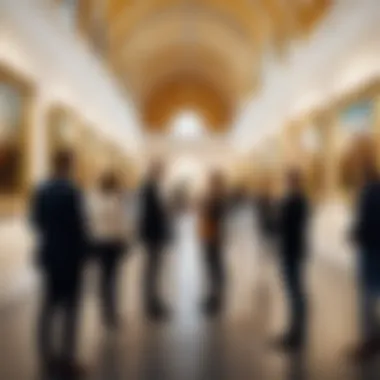

"The Kunstkamera is more than just a museum. It is a cultural phenomenon that fosters dialogue, understanding, and appreciation across borders."
In summary, the Kunstkamera remains a significant cultural and educational institution. Its ongoing adaptation to modern needs and its efforts in promoting global understanding ensure that it will continue to influence the cultural fabric of Russia and the world.
Challenges and Critiques
The Kunstkamera, while revered as a staple of Russian cultural heritage, is not devoid of challenges and critiques. Understanding these issues is vital as they shape the institution's direction and public perception. Critiques concerning preservation and relevance in a technology-driven era are particularly significant, influencing both operational practices and visitor engagement strategies.
Preservation Controversies
One ongoing debate revolves around the methods employed to preserve the artifacts within the Kunstkamera. As a museum that houses numerous delicate specimens collected over centuries, the balance between preservation and accessibility is complex.
Artifacts often require specific environmental conditions, such as controlled temperature and humidity, to prevent deterioration. However, strict preservation measures can curtail public access, leading to concerns about visibility and educational engagement. For example, some rare items may only be displayed during special exhibitions, limiting their exposure to the general public.
Moreover, controversies arise surrounding the provenance of certain artifacts. For instance, some specimens may have controversial histories, including those acquired during colonial-era expeditions. This has prompted discussions about ethical curation and the responsibilities museums have in acknowledging the histories of their collections. Stakeholders often argue for transparency in showcasing not only the objects themselves but also the narratives surrounding how they were obtained.
Relevance in the Digital Age
As the world rapidly shifts towards digitalization, museums face pressure to adopt modern technologies to remain relevant. The Kunstkamera has begun to integrate various digital initiatives to enhance visitor experience, from virtual tours to interactive exhibits. However, challenges remain.
The primary concern is that relying, too much on technology may detract from the raw, authentic experience that a physical visit can offer. Visitors may end up preferring digital content over an actual museum experience, potentially impacting ticket sales and overall attendance.
In addition, there is a need for educational programs to adapt to the digital landscape. Creating online resources that reflect the knowledgeable essence and expansive history of the Kunstkamera's collections is necessary for attracting and educating younger audiences. If executed well, the online components can serve as vital gateways to stimulate interest in physical visits.
The Kunstkamera must navigate the treacherous waters of maintaining authenticity while embracing modern methods to engage the public.
In summary, while the Kunstkamera stands as an essential pillar of Russian cultural identity, addressing these challenges is crucial. Through balancing preservation with accessibility and embracing the digital age without compromising core experiences, the museum can continue to thrive as a relevant institution.
Future Prospects
The Kunstkamera faces a promising future, steeped in its mission to preserve and present Russian cultural and scientific heritage. Its continued relevance in a rapidly changing world rests upon several key elements, including an expansion of its collections and the integration of advanced technology. As global interest in museums and heritage sites grows, the Kunstkamera must adapt and innovate to remain a vital resource for both tourists and scholars.
Expanding Collections
The expansion of the Kunstkamera's collections is essential for maintaining its leading role in cultural education. This growth can involve acquiring new artifacts that showcase diverse aspects of Russian history and science. By focusing on lesser-known subjects and underrepresented communities, the museum can provide a wider understanding of the country's rich tapestry.
Developing partnerships with international institutions can facilitate this process. Collaborations with universities and research bodies could lead to temporary exhibitions and loans of significant items, enhancing the museum's offerings. Furthermore, resources allocated towards conservation will ensure that both old and new artifacts are preserved for future generations.
Potential areas for collection expansion could include contemporary scientific innovations or indigenous cultural items from various Russian regions. This strategy would not only attract a broader audience but also emphasize the relevance of the museum in today's society.
Integrating Technology
Integrating technology is another vital aspect of the Kunstkamera's future. As digital resources become ubiquitous, the museum must embrace these advancements to enhance visitor experiences and accessibility. Implementing virtual tours, for example, can allow remote audiences to engage with the museum's collections. This makes it possible to reach individuals who are unable to visit in person, thus expanding the museum's impact.
Moreover, advanced data analytics could be utilized to understand visitor engagement and preferences better. By collecting feedback through interactive platforms, the Kunstkamera can tailor programming and exhibitions to meet the evolving interests of the audience.
Interactive displays can also enrich visitors' experiences. Augmented reality applications can provide deeper insights into artifacts, giving them more context and significance. In this manner, technology becomes a bridge between the historical and the contemporary, allowing for a multifaceted exploration of the Kunstkamera's collections.
Overall, the future prospects for the Kunstkamera signal a commitment to preserving its legacy while fostering innovation and inclusivity in cultural education and public engagement.
End
The Kunstkamera plays a vital role in understanding the cultural and scientific development of Russia. Its historical significance cannot be understated, as it serves as a testament to the vision of Peter the Great and his desire to open Russia to the world. This institution does more than just house artifacts; it is a living, breathing entity that continues to impact education and research. It engages visitors, scholars, and locals alike, providing them with insights into humanity's shared history.
Reflection on the Kunstkamera's Impact
The impact of the Kunstkamera stretches beyond its physical presence in Saint Petersburg. It fosters a dialogue between the past and the present, reminding us of the continuous evolution of knowledge. A few specific elements that underscore its significance include:
- Cultural Exchange: The museum has become a hub for cultural exchange, attracting international scholars and tourists. This interchange enriches local understanding of global issues.
- Educational Initiatives: Through various educational programs, the Kunstkamera plays an essential role in shaping future generations. It prepares students and aspiring researchers to appreciate the complexities of cultural heritage.
- Preservation of Heritage: The ongoing efforts to document and preserve artifacts highlight the museum’s commitment to maintaining historical integrity. The challenges faced in this process spark discussions about the ethical considerations of museum practices.
Overall, the Kunstkamera not only preserves the past but also inspires future generations to learn and discover. Its impact is felt in Russia and across the globe, making it a cornerstone of cultural heritage that will continue to thrive.







